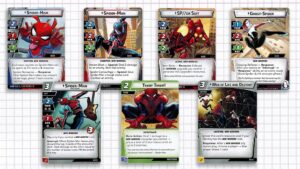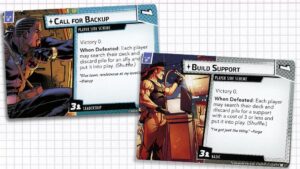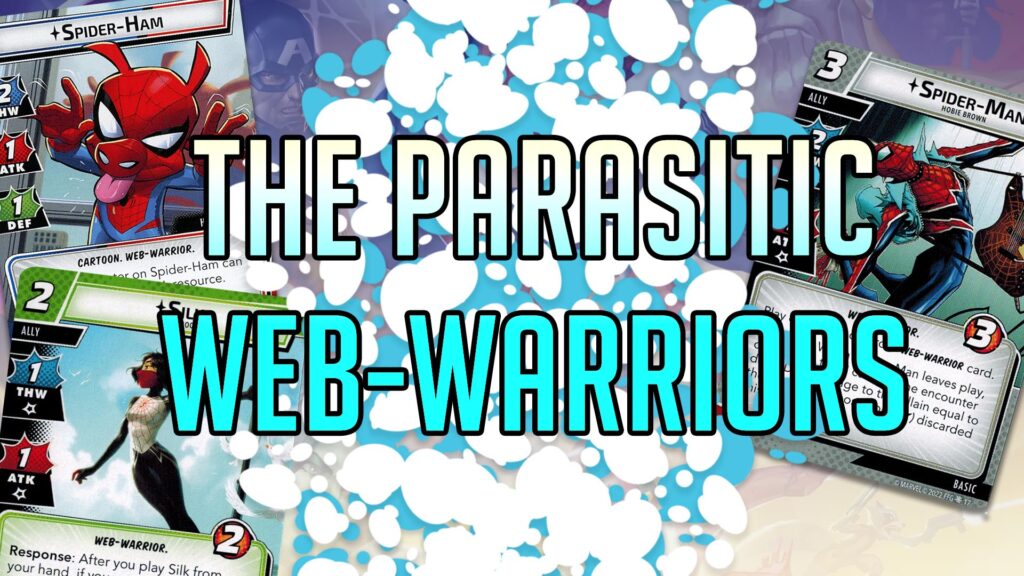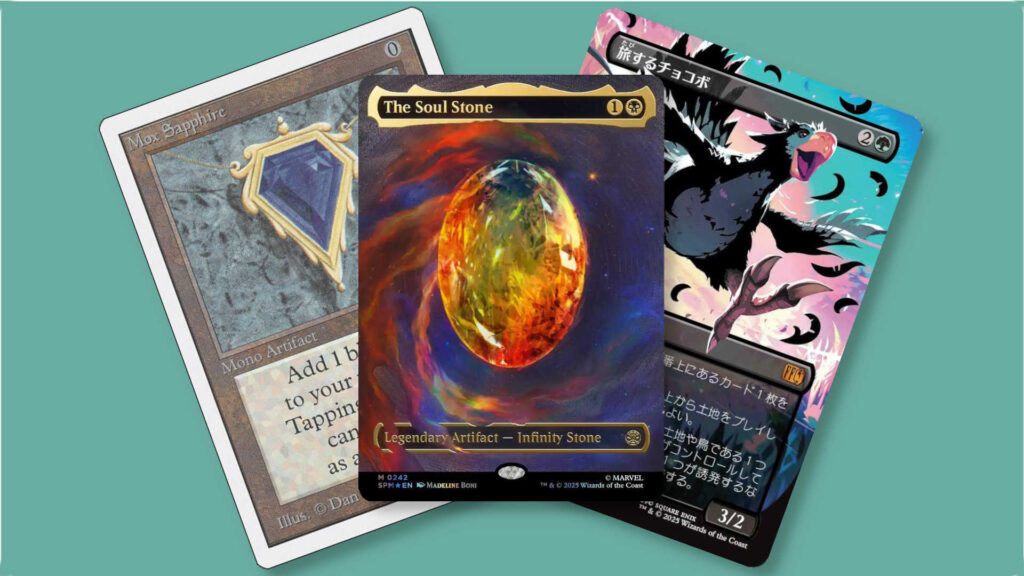I was recently introducing Marvel Champions to a friend, and during my setup of their first scenario they were perplexed by the mere existence of Spider-Ham in the game. They had a morbid curiosity to understand how the deck played, but I advised them that for their first game, we weren’t going to explore that hero. The mechanics built around it were more complex than I thought they should take on, and because I felt that the card pool of Web-Warriors he represents was far too parasitic to truly reflect what Marvel Champions is.
This discussion carried on to a separate gaming event that I attended a week later, where the question was posed about if the Web-Warriors were truly parasitic. The question itself got a deep breath for more than one individual, with the general consensus reached being, “maybe?”
With this idea stuck in my head, I wanted to further explore this thought exercise, educate readers on what to look out for when evaluating a mechanic, and look at how another game has been able to take a parasitic mechanic and turn it into something that is now linear, but more diverse than it originally was. Ultimately, mapping out what Fantasy Flight Games could do to correct what may potentially be a minor design mistake.
Table of Contents
ToggleThe Amazing, Friendly, Superior Archetype
A good way to identify a “parasitic” mechanic is when it uses or creates a resource found only in a limited pool of assets, usually the product or line it came in. For the purposes of Marvel Champions, the Avengers trait got around this by being the only team you cared about for the first year and a half, at which point the Guardians were introduced. And this Avenger support continued into the third wave, headlined by Mad Titan’s Shadow, capping off the first two years of the game, before we dove in Sinister Motives, home of the Web-Warriors.

Within this wave, Web-Warriors got the representation through four of the six heroes: Ghost-Spider, SP//DR, Spider-Ham, and Spider-Man (Miles Morales). In terms of allies, the trait would appear three times in Justice, four in Protection, and seven in Basic. We also got the Basic support card Web of Life and Destiny, and four additional cards that required a Web-Warrior be in play to function.
And from this pool of cards we have a remarkably powerful and consistent deck that can be easily utilized by all four aforementioned heroes, with Spider-Ham being the most significantly powerful. The key to so much of the potential of the trait is that a high percentage of this specific card pool requires you to have a Web-Warrior in play. This is easily done when your identity has the trait, but was difficult at the time of release for every other hero because it required you to fill your deck with cards that were contingent on a batch of other cards in your deck.
There is plenty of reason to believe Web-Warriors qualify for parasitic status, but I want to make it clear that being parasitic doesn’t invalidate anything or make the trait inherently bad for the game.
Once you buy in, you gain assess to aspect cards like the Silk ally, who can discard a problem treachery from the encounter deck, the SP//DR ally, who recurs herself, with little setup, and Spider-Man (Hobie Brown), a Basic ally who is held back by a Web-Warrior card requirement and yet still might be one of the best cards in the game.
For a cooperative game, this is not necessarily a huge problem. Web-Warriors do cool things, and part of the draw of Marvel Champions is that it is a power fantasy. But what it does result in is decks that are saturated with staples, which takes away from the fun if you’re someone who enjoys deckbuilding. And don’t get me wrong, there is no shame in net decking when it comes to Marvel Champions.
Standing on the Shoulders of Giants
A lot can be learned by looking at how other games have addressed parasitic mechanics in the past. Chiefly, let’s look at the granddaddy of all card games, Magic: The Gathering. I was sold the bill of goods that is Magic: the Gathering by my cousin in 2002. It wasn’t long before I would discover the Sliver creature type, a hive mind of creatures that provided whatever mechanical benefit they have to every other creature in play that share the type.

At the time, there were 17 Slivers in the game and the only thing that distinguished a casual Sliver deck from a more competitive one was who could afford to buy Sliver Queen. Every deck looked pretty much the same, because an informed player base had already decided which of these creatures worked best. A veteran player could mentor you simply by saying, “just buy every Sliver you see in the stack of singles,” and you were off to the races.
The established “best deck” would eventually be challenged by the addition of 16 more Slivers in 2003’s Legions and then finally reached critical mass in the 2006 to 2007 Time Spiral block, adding 43 more. A decade and half later, with 40 more Slivers seeing print, what could have been a parasitic mechanic, destined to wither away, was now a known quantity with a near-unlimited amount of iterations.
Avoiding Spider-Geddon
So what can be done to correct the problem of Web-Warriors in Marvel Champions? Put simply, I think the error made thus far is that we’ve been given one self-contained wave that examined this design space, with no sign of return in the near future. This may have been intentional, but I have to wonder if the pacing of releases in the last two years was much slower than the Marvel Champions design team expected when they started designing Sinister Motives, circa 2020.
There is an entire multiverse of characters that we can draw upon, we simply need to make more content around the trait. With such a relatively small card pool, it’s easy to turn every available card in your chosen aspect into a staple. But once we have more cards that are tailored towards even a handful of the myriad archetypes in the game, not only will we have more staples than we can fit into the deck, we’ll also have the opportunity to be making meaningful decisions about what we choose to include in any given deck.

Additionally, being able to work around trait requirements will also be imperative for the future of deck diversity in this game – not just for Web-Warriors. The introduction of player side schemes, such as Call for Backup and Build Support, mean that skilled deck builders are able to pair heroes with toolboxes of trait locked cards and find varying levels of success.
At this point in the game’s history, it doesn’t really bother me that Web-Warriors are a relatively solved archetype, because there is a whole host of more powerful decks that exist once the entire card pool is taken into consideration. But something that sets this trait back is that there is just currently a lack of diversity that I would love to see be introduced. And it’s not too late. But the Guardian trait? Now that is a parasitic mechanic!
Are we living in an age of archetypes in Marvel Champions? Find out here.




